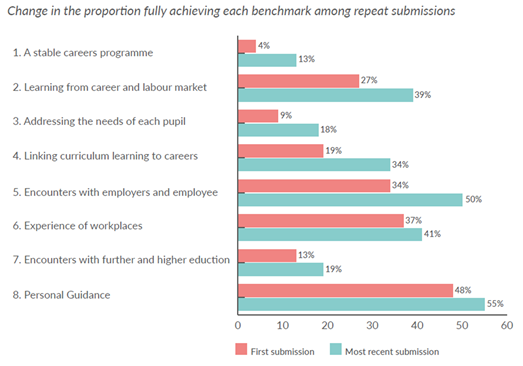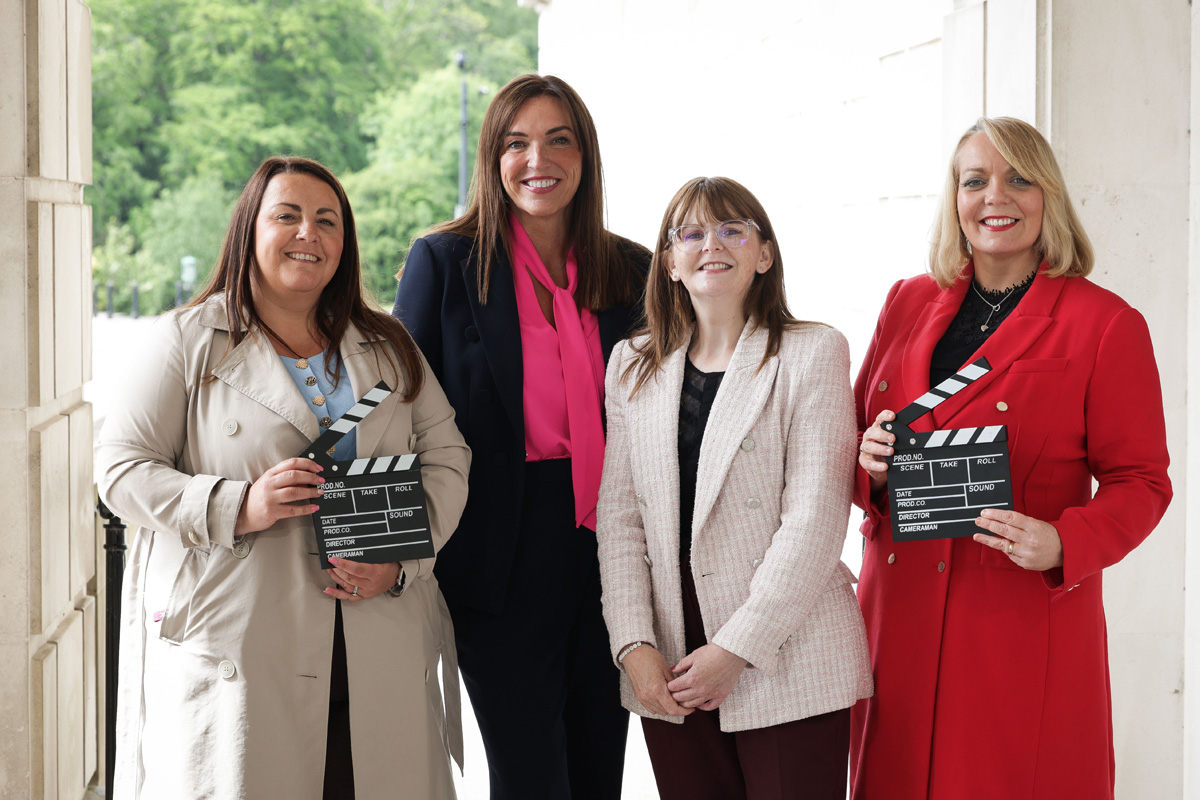Careers education turning a corner, new research finds

Schools and colleges across the country are getting better at preparing young people for the world of work, according to the most comprehensive assessment of careers education in England to date.
The Careers & Enterprise Company’s State of the Nation report looks at the performance of schools and colleges against the eight Gatsby Benchmarks, which measure the quality of careers education and guidance.
The research is based on evidence from the two thirds of schools and colleges in England who have carried out assessments using the Compass online self-assessment tool, developed in partnership by The Careers & Enterprise Company and the Gatsby Charitable Foundation.
A thousand of these schools and colleges have now completed multiple assessments, providing a picture of how careers education in England is changing over time.
These schools and colleges have improved across every one of the eight Gatsby Benchmarks, ‘fully achieving’ the equivalent of one extra benchmark between their first and last assessment.
The eight Gatsby Benchmarks are:
- A stable careers programme – Every school and college should have an embedded programme of career education and guidance that is known and understood by pupils, parents, teachers and employers.
- Learning from career and labour market information – Every pupil, and their parents, should have access to good-quality information about future study options and labour market opportunities. They will need the support of an informed adviser to make best use of available information.
- Addressing the needs of each pupil – Pupils have different career guidance needs at different stages. Opportunities for advice and support need to be tailored to the needs of each pupil. A school’s careers programme should embed equality and diversity considerations throughout.
- Linking curriculum learning to careers – All teachers should link curriculum learning with careers. For example, STEM subject teachers should highlight the relevance of STEM subjects for a wide range of future career paths.
- Encounters with employers and employees – Every pupil should have multiple opportunities to learn from employers about work, employment and the skills that are valued in the workplace. This can be through a range of enrichment activities including visiting speakers, mentoring and enterprise schemes.
- Experiences of workplaces – Every pupil should have first-hand experiences* of the workplace through work visits, work shadowing and/or work experience to help their exploration of career opportunities, and expand their networks.
- Encounters with further and higher education – All pupils should understand the full range of learning opportunities that are available to them. This includes both academic and vocational routes and learning in schools, colleges, universities and in the workplace.
- Personal guidance – Every pupil should have opportunities for guidance interviews with a careers adviser, who could be internal (a member of school staff) or external, provided they are trained to an appropriate level. These should be available whenever significant study or career choices are being made. They should be expected for all pupils but should be timed to meet their individual needs.
This cohort of schools and colleges have shown particularly strong improvement in providing all young people with regular, meaningful engagement with employers, with half of them now fully achieving this benchmark.
Schools and colleges in this cohort have also progressed strongly in ‘linking curriculum to careers’ and the majority of schools are now meeting the personal guidance benchmark.
Disadvantaged communities performing strongly
Despite the positive overall picture, the report finds significant variance across the country. Schools and colleges serving disadvantaged communities – those with higher unemployment and fewer people in ‘professional’ occupations – actually tend to provide higher quality careers education and guidance to their students.
And ‘coastal and peripheral’ areas, traditionally areas of lower social mobility, also score highly, with schools and colleges in the Humber and the Solent scoring the highest against the Gatsby Benchmarks on average.
Though the report cautions that further investigation is needed, it suggests this may reflect the targeting of resources in the education sector to areas of low social mobility, and that schools and colleges in these areas are prioritising careers support as a solution to the social mobility challenge.
Claudia Harris, Chief Executive of The Careers & Enterprise Company, said:
“The positive news is that we are moving in the right direction and getting closer to offering all young people the support they so fundamentally need.
“Resources are tight for schools and colleges at the moment, which makes this steady progress all the more impressive. It’s encouraging to see schools and colleges are so engaged and that 3,000 have assessed themselves against the Gatsby Benchmarks.
“But the Gatsby Benchmarks set a deliberately high bar, and as a country we are still a long way off. The Careers Strategy set out a range of support for schools and colleges that will not yet be reflected in these results. This includes training for 1,400 Careers Leaders and 20 Careers Hubs across the country. We look forward to seeing the results of this extra support next year.
“It is a testament to our schools and colleges that so much progress is being made so fast. This work is vital for our young people and our economy.”











Responses